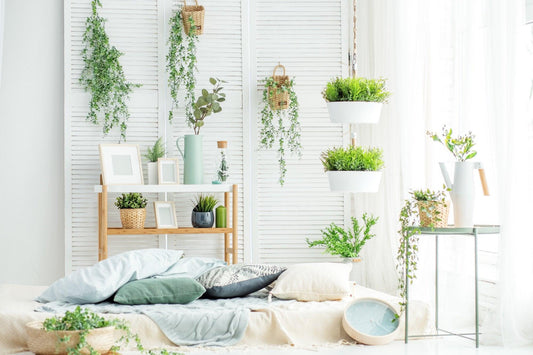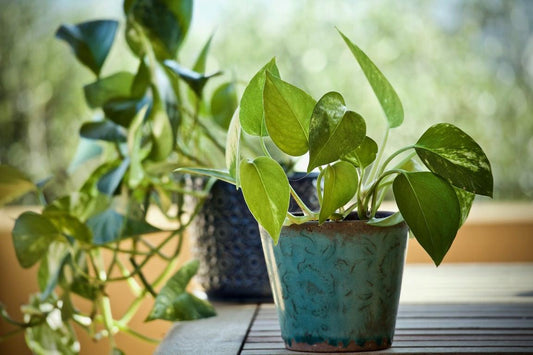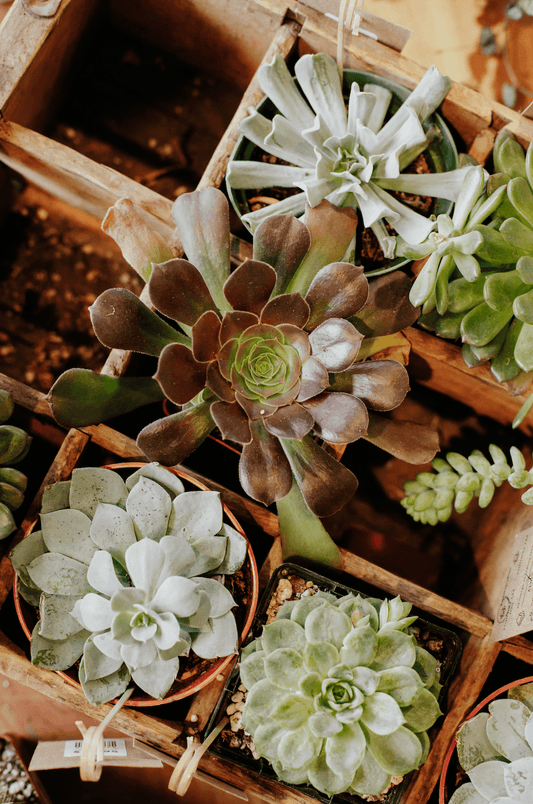ALOCASIA
How to Care for the ALOCASIA Plant
Overview
The Alocasia, also known as the Kris Plant, or Elephant Ear, is a striking plant with arrowhead, or heart-shaped leaves and white veins. Native to tropical areas in Asia and eastern Australia, there are nearly 100 species of Alocasia, each one varying slightly in terms of appearance. They grow from two to nine feet tall depending on the species, making them impressive ornamental displays for indoor spaces. These plants can be fast growers, producing up to a new leaf almost every week in their ideal environment. This is due to the fact that they are able to store energy in their bulbs, easily permitting for new growth when in ideal conditions.


Profile
One of the largest of the species is known as the Giant Taro, which can grow up to 15 feet tall with three- to four-foot long leaves. The Red Secret stands smaller at three feet, characterized by its metallic red-bronze leaves. Even more compact in size is the Black Velvet, a deep green plant with white veins that grows no larger than 18 inches. The Alocasia Zebrina is a popular hybrid cultivar as well, with leggy stalks that can be quite the quick grower.
Alocasias are more known for their leaves, but they do produce flowers during springtime when brought outside. These flowers differ in shape from traditional flowers, having more of a corn-cob appearance.These plants are mildly toxic to both pets and humans if ingested, causing mouth and stomach irritation.




Low light
Most Alocasias do best in bright, filtered light, with bigger variants able to be trained to take on full sun. The brighter the light, the better the leaf color. Alocasia leaves can turn yellow if they get less light than necessary, but be mindful of leaf burn as well.

Occasional
They are native to humid environments, so make sure to avoid placing them in drafty areas and in temperatures below 65 degrees Fahrenheit. Water using filtered water or tap water left out overnight, and water when the top 50% of the soil is dry to the touch. Alocasias prefer to have their soil kept consistently moist, and do not do well when they are relocated too often.

Easy breezy
Pruning this plant is an easy task. Simply snip away shriveled leaves, or specific leaves to create a certain aesthetic. Alocasias are no trouble to raise indoors as long as their most basic needs are met. They go through a dormant growth period in winter, and keeping them in a warmer spot is necessary during this time. Water your Alocasia less, but never allow the soil to dry out in full. It should exit its dormant stage come spring, and begin to put out growth in a much quicker manner.
FREQUENTLY ASKED QUESTIONS (FAQs)
on ALOCASIA
What should I do when my Alocasia’s leaves begin to droop?
This may be a sign of the plant having too little light, too little water in its soil, or a lack of nutrients. Adjusting these will help the plant recover in time, but you can assist by supporting the stem via a stake.
What should I do when my plant loses its leaves?
Alocasias grow from tubers, which house reserve energy for it to keep growing, so having lost its leaves doesn’t mean it’s a lost cause. Place it outdoors in a shaded area to keep it growing.




